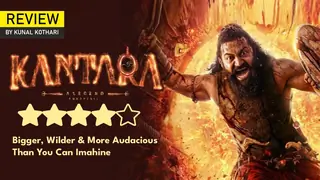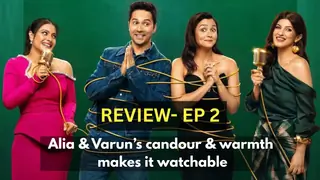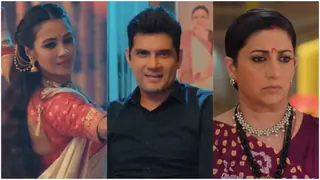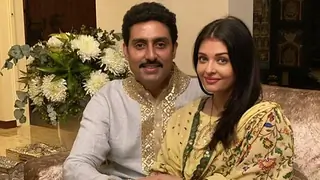Rahman, I, and the Sound of Music 
A few years back I was recording some instrumental pieces for a tele-serial. I was working out a few pieces with an exceptionally talented flautist. I was looking out for a particular tone of the flute which I was somehow not getting. The excessive sound of the breath was making me uncomfortable. I told the flautist twice or thrice that I did not want the sound of breath, but the sound persisted. I could see that if I told him one more time, he was bound to get irritated with my suggestion. But the musician in me could not bear the little deviation from my idea of the musical piece. Finally, softly, I told him that I was not getting the sound that I wanted and the sound of the breath refused to go away. As I had expected, he flared up. "What's your problem?" he asked me. "Even Rahman likes the sound of the breath. He insists on it." "Then play for Rahman." I quipped, even my temper rising a little. "What are you doing here?"
It was a reaction that I had to give but I was aware all the time about the degree of influence Rahman commanded when it came to the 'sound' of music. It was as if people, and more particularly musicians, were under a hypnotic spell of the music of this man from the land of filter coffee. Everybody was talking only about Rahman. Musicians swore by his sense of sound production. It was not just 'Rahman – the musician'; it was 'Rahman – the magician' It was not as if there was no other side... there was... and they were equally ferocious in their criticism of Rahman.
"He's getting predictable-" was a reaction that started with his third film. The people who dismissed Rahman were mostly seen to be from the earlier generation. But again these people could not tolerate the music of Anu Malik either. The magic of yesteryear songs was still prevalent among this generation. I had also seen and heard film musicians of the earlier era not being so impressed with Rahman. So where was I in this milieu and how do I see myself as contemporary of A. R. Rahman?
The story starts in 1992, with the release of the film Roja in Tamil. I was such an avid fan of Mani Rathnam after Nayakan that I had made the brave attempt of seeing Dalapathy in Tamil, a language that was way beyond my comprehension. My attempt did not go unrewarded and I was completely taken in by the manner of story-telling of Mani Rathnam. I had also become an avid fan of Illayaraja, whose many Tamil cassettes I bought and heard again and again. So when I heard that a Mani Rathnam film called Roja was being screened, I went immediately to Aurora, a theatre at King's Circle. I was a little disappointed that Mani Rathnam's usual music composer, Illayraja, had been replaced by a newcomer called Rahman. My doubts about A. R. Rahman were razed to the ground the moment I heard the first note of the background score play. This sound was BIG… and it was definitely different. Not just different, it was drastically different. Then the first song came - 'Chinna Chinna Asai'. The effect of the song, together with Mani Rathnam's visualisation, Santosh Sivan's brilliant cinematography, and Rahman's music was pure alchemy. And how could one forget the background score of the movie? I was so hypnotised by the movie's background score that I went back to Aurora again the following week, just to hear the background score. I think it must have been the first (and perhaps the only) instance where a Marathi youth went twice for a Tamil film without subtitles to a theatre!
At that time Rahman was not known much in North India, but the music was a rage in South India. Roja was followed by Shankar's Gentleman and then Mani Rathnam's Thiruda Thiruda. K. Balachander's Duet was another film that was released during this period. The way Rahman had explored Kadhari Gopalnath's saxophone in the film was phenomenal. I used to go to Matunga and buy these cassettes, because Rahman's sound excited me no end. The score of Thiruda Thiruda, I remember, was a culture shock for me and I grudgingly nodded to the beat of the music. It was shockingly western, but there was an Indian soul lurking behind those harmonies. I later came to know through some Tamilian friends that although Thiruda Thiruda didn't do too well, the music was given stupendous reviews.
In 1994, Roja was released in Hindi and A. R. Rahman became a household name in India. The magic had spread to the entire nation. This was followed by the film Kadhalan directed by the whiz kid Shankar. Songs like 'Muqabla' and 'Urvashi' made everybody tap their feet while the song 'Ennavale Adi Ennavale' won the National Award for the Carnatic vocalist, P. Unnikrishnan who made a debut in film singing with this song, and also hearts of those who loved melodious tunes more than foot-tapping ones. (The song is known to Hindi listeners as 'Sun Ri Sakhi Meri Pyari Sakhi'.)
Now, doyens of Hindi film industry were running to Chennai to meet and work with Rahman. He signed Shikhar with Subhash Ghai and Droh-kaal with Govind Nihalani. But as fate would have it, Shikhar was shelved and Rahman lost all the tracks of Droh-kaal due to a computer crash. And so, Rahman's first original Hindi film was Ram Gopal Varma's Rangeela and that marked Rahman's definite foray into Hindi music. Mani Rathnam's Bombay saw Rahman singing playback for the first time in 'Humma Humma'. The Hindi version had Remo singing the song. While 'Kehna hi Kya' became a big hit with Chitra and Nusrat Fateh Ali Khan singing, even the title track of Bombay caught the imagination of his fans. Not since R. D. Burman had any composer been successful in popularising the instrumental title track of a movie. From then on, we all know the journey of A. R. Rahman to the dizzying heights of fame and popularity. From then to the music of Swades and finally Rang De Basanti Rahman has entertained, enthralled, excited, captivated, mystified, bamboozled, and very rarely but surely disappointed his fans. What excites me about Rahman as a musician is that his music is multi-layered, both in the physical and abstract senses. He appeals to emotion or intellect and sometimes – both. As a musician and as a public figure, he is mysterious and is more fun to unravel than simply sit back and enjoy.
Rahman & His Tunes I started humming the tunes of Roja, the moment I stepped out of the theatre. The tunes had a great recall value and despite that, I discovered in some time that humming these tunes was not so enjoyable. I did not give it much thought then, but later when Bombay released, and the same phenomenon was repeated, I was curious. In both cases, I had loved the music. It had excited me. And yet humming it was not enjoyable. It was when I was going through an economics book and came across Alfred Marshall's Law of Diminishing Marginal Utility when I broke the 'Rahman' code, and like Perry Mason, I kicked my leg for not getting the solution earlier. Strange? But the truth, no less! Alfred Marshall's law of economics stating that as a person increases consumption of a product - while keeping consumption of other products constant - there is a decline in the marginal utility that person derives from consuming each additional unit of that product. So how does it fit into Rahman's composition? It is a technique invented by Illayaraja. I often wondered how I could memorise Illayaraja's tunes so quickly in spite of not understanding the language. And I must confess to having an extremely bad memory when it came to remembering tunes. Using Illayaraja's technique of composition, Rahman's standard composition was broken into short musical phrases which were repeated in different words. Take for example:
Dil hai Chhota sa,
(Repeat with a minor change) Chhoti si Aasha
(Repeat the same phrase) Masti bhari Man ki
Bholi si Aasha
Now what has happened here is that you have already heard the complete phrase twice. The same formula is repeated throughout the song. Now, what happens in effect is that we are hearing the song twice or thrice in one go! You can compare it to a Salil Chowdhari's song for instance – 'Tasveer teri dil mein'. You'll notice that all the musical phrases in the sign line (dhruvapad) are different. Illayaraja, and later, Rahman used this new technique of composition. It gave a recall value to the tune but also ensured that its shelf life was shorter. Slowly but surely all music directors in the Hindi film industry also started using the same technique. It was a very foolproof technique and you could see that in songs of Anu Malik and Anand-Milind, whenever they were not lifting a composition in toto! But nobody could do it like Rahman and that is what differentiated him from the pack. It is not enough to just have short, repetitive phrases – they also needed to be consistently melodious and this is what Rahman did the best.
I also noticed that Rahman in Tamil was a different person as compared to Rahman in Hindi. The language of music was the same, but I have always thought Rahman was more at home with Tamil than in Hindi which was obvious. I remember an incident narrated by Mahalaxmi Iyer. She was recording for a song in 'Dil Se'. The words were 'Paakhi Paakhi Pardesi'. Rahman kept pronouncing it as 'Paaki'. Of course, merely wrong pronunciation does not reflect a sense of discomfort with the language. Now, Tamil has many syllables which end on very staccato notes. Hindi doesn't. In Hindi, there is an unwritten halant on each ending consonant. Rahman's composition is very staccato even in Hindi. The merit in this is that the composition sounds different and fresh because nobody composes it like that in the Hindi idiom. The down side is that lyric takes the back seat. Although the feeling and the mood in the song are conveyed, the subtler nuances of the language evaporate.
What makes Rahman, Rahman 
I have always maintained, and I have no doubt that I am in the minority, that Rahman is more a technocrat than a composer. This opinion was formed mainly because I could trace the origins of his composing techniques to Illayaraja, with whom Rahman worked as a keyboardist. But my opinion cannot be permanent because, Rahman being an intelligent musician, keeps evolving and growing with each film. For example, in The Legend of Bhagat Singh, he had composed the song Mera Rang De Basanti Chola. The composition was so Southern that one could not identify it with the Sikh freedom fighter at all. But in Lagaan and then in Rang De Basanti, one hardly sees the southern touch. There is a conscious effort to keep the North Indian flavour.
But where Rahman can be considered a path-breaker is the manner in which he revolutionised the sound of music. And he changed the way his contemporaries looked at the concept of sound. He makes even ordinary compositions 'sound' extraordinary by using instruments and synthesised music to great effect. A criticism has been that Rahman uses synthesised music in excess. But Rahman has recognised correctly the places in which the aesthetics of synthesised music lie. Right from Kalyanji Anandji to Bhappi Lahiri music directors have used the synthesiser and other electronic music but Rahman has been successful in refining the synthesised sound. It would not be an exaggeration to say that Rahman demonstrated how the synthesised sound should be used. Prior to Rahman's entry on the film scene, music directors harmonised the song with only the string section. Rahman introduced the synthetic pads and created a different effect for different songs with a different sound as harmony. Notice the sound of the pads in Roja, for instance; it created a warmth and also gave a big-screen feel to the sound. Among other things, Rahman's music is really BIG. It justifies the Cinemascope screen. The use of available technology was always there. When microphones and sound recording on tape was latest technology it was also used widely. In fact, commercial music has to be credited with making the optimum use of technology in music. So, the accusation that Rahman uses excess of technology does not really hold water. He rides technology; he makes sure that technology doesn't ride him.
The other accusation against Rahman was that he did not use enough acoustic instruments. Rahman himself once admitted that his music was getting too repetitive and dance oriented, probably because of the type of films he was doing. But Rahman redeemed himself by doing a lot of films which had a folk or an Indian flavour to it. In 1999, the Tamil film Sangamam was released. It was a low budget movie and Rahman used a lot of traditional instruments. The entire was score was based on folk and classical music. In Zubeidaa also, the soundtrack has more acoustic instruments.
Rahman has awarded the instrumentalists in his films a status that no music composer before him had done. Siva Mani, the noted drummer and percussionist said, "The recognition that I enjoy today is because of Rahman. There are so many talented people behind a film music score. I played for Illayaraja for very long, but my name never figured on the screen or the cassette cover. Rahman changed it all. He gives credit to every single member of his team for whatever part they play, big or small. That makes him really special. People came to know about me only because of him. I thank him for that." Lot of musicians like – Naveen (flute), Clinton Cerejo (backup vocals), Sivamani (percussions) – became household names with their credits appearing on the sleeves of inlay cards. Not only on the screen (in terms of credits), but even on the sound track (in terms of sound) Rahman made his instrumentalists stand out. How can one forget the sound of the Shehnai in the title song of Swades? Or the sound of the raw flute in 'Chinamma' from the film Meenaxi – A Tale of Three Cities? So, however grudgingly, I had to forgive my flautist friend for his outburst. Rahman's understanding of the timbre of an instrument and how to give old sounds new nuances is without parallel. Also, in case of the flute in Chinamma, he reintroduced an old sound which technology had made us forget. It was like meeting a long lost old acquaintance. A keyboardist friend of mine pointed out how Illayaraja and Rahman had used the higher octave flute for sad pieces, when in Hindi films sad pieces on flute necessarily meant the lower octave.
The rhythm that Rahman used was also unconventional to say the least. He could be modern without being western in his approach of treating rhythm which I feel is one of his extraordinary qualities. The song in Bombay – 'Kucchi Kucchi Rakkamma' is a good illustration of this quality. The rhythm is essentially ethnic and yet it is modern. There will always be surprises but rarely will they let you down. Sometimes for a song of a slow pace, he will use a rhythm that runs in double the speed. It has a strange but a dramatic effect on the outcome of the song. Two cases in point here are 'Saawariya' from Swades and 'Tu Bin Bataaye' from Rang De Basanti. In Chhainyya Chhainyya, he used the rhythm instruments to create the movement of running train without using the sound of the train. Rahman is gifted with the quality of saying things between the lines with the use of orchestration.
Rahman and his singers I don't think any other music composer can boast of introducing or working with so many singers as Rahman has. Just to list off hand – P. Unnikrishnan, Anuradha Sriram, Minmini, Chitra, S. P. Balasubramanium, Hariharan, Srinivas, Naresh Iyer, Kunal Gaanjawala, Mahalaxmi Iyer, Shankar Mahadevan, Shoma Bannerjee, Richa Sharma, Sonu Nigam, Sukhvindara, Alka Yagnik, Sadhana Sargam, Baba Sehgal, Adnan Sami, Daler Mehdi, Apache Indian, Michael Jackson, Remo, Shwetha Shetty, Sanjeevani Bhelande, Vaishali Samant, Nusrat Fateh Ali Khan, Kailash Kher… It just goes on… And this is just a peek into the vast spectrum of usual and unusual names that Rahman has worked with.
Even in a single film, we were used to see only three to four names in the singers' credits. A standard Rahman film boasts of at least half a dozen singers. Rahman's own justification for this is, "I do it for variety. Otherwise things would get monotonous. There was a time when the album of a film would have only two voices. Today different singers sing for the same character. The times have changed. The attention span of the average listener has decreased and his geographical purview has broadened. The listeners no longer think in terms of perfect or imperfect. They want different voices, standards be damned."
As a music composer, I don't necessarily subscribe to this view. You don't always give people what they ask for. (Like you don't give a chocolate to a child just because the child wants it!) And although it may be the right commercial move it could have a damaging effect on the song more often than not.
Rahman was actually criticised for using singers without judging their ability to articulate language specific nuances. He was pulled up for using Udit Narayan for Tamil songs and Rahman conceded by saying that he would not use Hindi singers for Tamil songs. But he justifies using new and sometimes untrained voices for playback by saying that it is not necessary that all actors must have perfect voices like S. P. Balasubramanium or Chitra, or Hariharan.
I once asked a singer friend of mine, why all singers had this incredible urge of singing for Rahman. She said that it is what he does to your voice. You wouldn't believe that it was your own voice when it comes out as a finished product. He brings out the best tonal quality in you. It was somewhat like what Gautam Rajadhyaksha does with his camera!
He has used voices in very unconventional manner to great effect and there are lot of times when voices play roles of instruments rather than conveying poetry of the song. Some examples of having used voices in a very different manner are Shankar Mahadevan in Urvashi (Kadhalan) or Kay Sera Sera (Pukar), Vasundhara Das in O Ri Chhori (Lagaan), Baba Sehgal and Shwetha Shetty in Rukmini Rukmini (Roja).
I am, sometimes, confused with choice of singers that Rahman casts for playback. I have, somehow, never been convinced with Asha Bhosale for Urmila Matondkar in Rangeela; or for that matter Lata Mangeshkar for Priety Zinta in Dil Se. In the Tamil version of the film also, he used S. Janaki who sounds as old as Lata Mangeshkar for the twenty something Priety! When a character synchronises his/ her lips on screen with the song, 'people want it' sounds like a feeble justification for a loose casting. After all, just because people want, Mani Rathnam couldn't have cast Jaya Prada in the young bride's role!
Rahman & his Background Scores Personally, I feel that Rahman's real forte is his background scores. Right from Roja to Rang De Basanti, some of the marvellous background scores have come from under his mantle. His precise understanding of the mood of the scene and his irreverent and yet highly appropriate use of instruments is a delight to watch and hear. In Rang De Basanti, during the chase of Chandrashekhar Azad, one expects the sound of strings or brass section but what we get to hear is the wild strumming of the guitars! Totally unexpected and yet it fits the scene like a glove. This irreverence of his reminds me of the chase sequence in Sholay, where R. D. Burman got Pt. Samata Prasad to play a rela on the tabla. The concept here was the same, only times have changed.
And in the end… Rahman & I It is impossible to stay in music industry and ignore Rahman. One just cannot. Producers keep saying – 'Rahman jaisa sound chahiye!' Journalists keep comparing your music with his. I remember being upset because a journalist had written a review about a Marathi song of mine saying that it sounded like a Rahman composition. If in those days you used a reverberated aalaap you were accused of copying Rahman! On another occasion a journalist friend of mine had said: "If Rahman can create such a refined sound, why can't you?" I had replied, "I will, if you pay me a crore for a movie." My reaction was not at all against Rahman. It was a serious observation. At that time were doing entire Marathi albums at 1/20th the cost of one Rahman song. But Rahman changed things even for people like us. He made us aware of the concept of having a new sound. And he made producers aware that money spent on the product delivered good results!
Sometimes, I wonder what Rahman is without all the paraphernalia. I don't believe that as a composer of tunes Rahman is extraordinary. Where I find him extraordinary is in his understanding and expression of the idiom of sound. Technology being available to you also matters a lot. And Rahman also hasn't had it coming for free. There has been toil and hard work for him. Rahman started working as a musician at the age of 12 when his father expired. He signed Roja when he was 26. So he smiles when people call him an overnight success.
Also, it is a great experience to evaluate Rahman as a music director. He gives a lot of food for thought in one song.
I think where Rahman lacks is in his understanding of language. But one must give him the benefit of doubt for Hindi as in Tamil his lyricist, Vairamuthu won National Awards repeatedly for songs set to tune by Rahman, namely for 'Roja', 'Pavithra', 'Kadhalan' and 'Minsara Kanavu'. Rahman himself insists on good poetry for his songs, "Lyrics lend immortality to a melody. The eternal, evergreen hit songs are always the ones with profound lyrics; lyrics that remain true and meaningful even after years."
After Rahman's third film, his critics said he won't be around for long. Fourteen years later, he is still here and is growing as a cult figure. The success of Rang De Basanti only strengthens his case. He is the face of Indian commercial music abroad. He is not without his flaws, but then nobody is. Rahman is said to be a very spiritual person. A quote that is attributed to him has found a permanent place in my head: "I am a strong believer in destiny. I also believe that destiny can be changed by prayers." Rahman will be around till he keeps reinventing himself and at least for now, he's doing just that.
Edited by Qwest - 18 years ago































